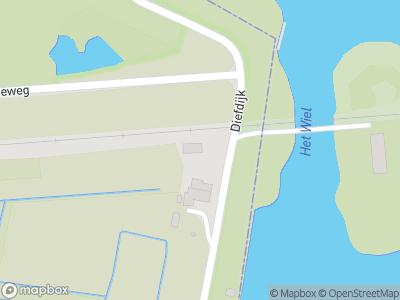The New Dutch Waterline (Nieuwe Hollandse Waterlinie) was built to protect the province of Holland against enemy invasion. However some points along the line proved vulnerable, including the point at which the Elst-Dordrecht railway line crossed the Diefdijk dike in Acquoy. In order to defend this point, a small fort with three swing bridges was built next to the dike: Fort Werk op de Spoordijk. The last remaining swing bridge is an exceptional example and still in working order.
Defensive line
At one point in time, the forts along the New Dutch Waterline would have housed 12,000 soldiers, all waiting for an enemy that never came. Then when the enemy finally arrived, the system was hopelessly outdated. The New Dutch Waterline has never really had the chance to prove its worth as a defensive line. However, it has been brought into active service three times: the first time in 1870 when the Franco-Prussian war threatened to escalate to a pan-European war the second was during the First World War, and finally for the last time in 1939.
Fort Werk op de Spoordijk
Fort Werk op de Spoordijk (literally: Fort on the Railway Dike) was built on the Spoordijk railway embankment between 1880 and 1885 at the point at which the railway line crosses Diefdijk dike. The fortification was built to prevent enemy infiltration inland, and comprised an earthwork wall around a gun battery and a bomb-proof guard house that was surrounded by a moat. The fort was reinforced later, with concrete parapets, two additional bomb-proof buildings (depots) and underground artillery store.
Swing bridge
The fortress could be accessed over three swing bridges. A swing bridge is a moveable bridge, which opens and closes by rotating on a vertical axis. Invented by the Dutch railway engineer F.C. Conrad, the swing bridge was a popular choice during the 19th century. The design of the swing bridge is a variation of the age-old drawbridge, but instead of upwards, the bridge opens sideways. This means that when the bridge is open, there are no protruding parts, making it ideal for military use and a clean line of fire. This example of a swing bridge in Acquoy has been recently restored and is one of the three working examples left in the Netherlands.















